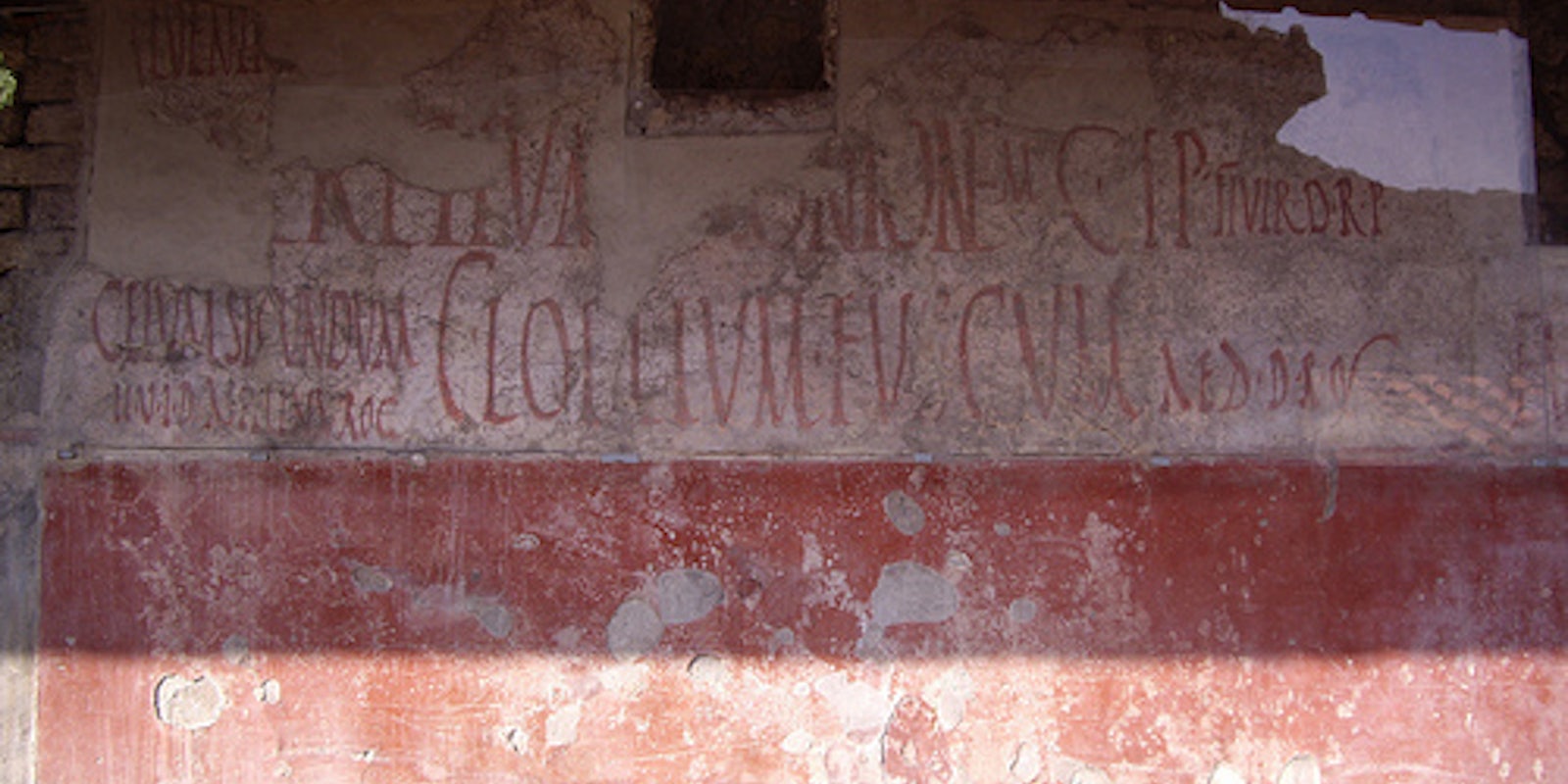One of the most difficult decisions in talking about the history of any aspect of computing, or even of technology as a whole, is to decide when it started. When, for instance, did social networking begin? With Facebook in 2004? MySpace in 2003? With CompuServe in 1969?
How about Pompeii, 79? (No, not 1979—just 79.)
I know. Hacky. But there is some truth to the notion that the walls of the houses and apartment insulae in the Italian city of Pompeii (and the other cities lying at the hinge between the Roman Republic and the Empire) created the original form of social networking—right down to the practice of bandwidth throttling.
Writing on walls with charcoal and inscribing with stones and knives was a common aspect of Roman life. A recent study, authored by researcher Eeva-Maria Viitanen, an archaeologist at the University of Helsinki, concentrated on political messages.
It was through political messaging that the revolutionary, information-wants-to-be-free promise of Roman disruptive technology (known as “graffiti”) hit the wall. Rimshot.
Much of the political advertisement of the time was commissioned by the candidates themselves and their supporters. They often hired professional painters to create the spots and competed against others for prime space. That space tended to be the sides of upper-income houses, not bars and shops.
“The current view is that any candidate could have chosen any location and have their ad painted on the wall. After looking at the contexts, this would not seem very likely,” Viitanen told the publication LiveScience. “The facades of the private houses and even the streetwalks in front of them were controlled and maintained by the owner of the house, and in that respect, the idea that the wall space could be appropriated by anyone who wanted to do it seems unlikely.”
So candidates, it is thought, had to bid against one another to secure the space. Candidates were a dime a dozen, while it turned out houses in the right places were not.
There were three times as many shops and taverns than wealthy houses. Most buildings in Roman cities had retail space on the first floor. In addition to being numerous, those retail spaces had high traffic. But the customers were unlikely to be literate, while those with an interest in the houses of the wealthy—residents, friends, peers—were likely to read and therefore be of higher status and greater influence in the community.
Therefore, where the messages were left was not a case of opportunism, but of audience—a peer to peer network of potential office holders speaking to their social peers, those with the most influence over voters of the lesser classes.
It is in this “peer-to-peer” communication where the “social networking” aspect of the communication lies, according to Viitanen. A case could be made, however, that the social networking aspect lay more strongly in the asynchronous messaging the wall network offered and the existence of a “permalink” for each conversation.
Photo by Virtusincertus/Flickr
